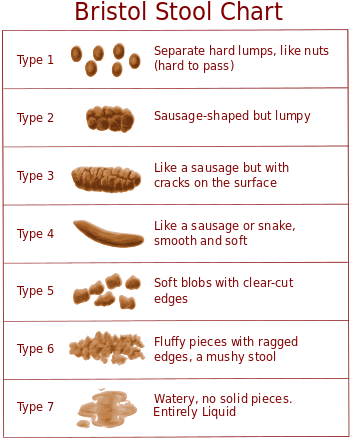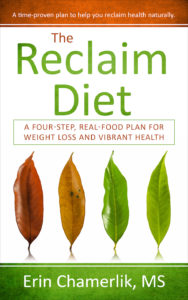
How to Test Bowel Transit Time
Are You Constipated?
Dr. Lawrence Wilson MD says, “At least half the large bowel (about 1 foot long) must empty every day. The colon is about two feet long or more, in most people. The ascending colon may be liquid and its contents are not ready for evacuation, so that is why about half should be ready for evacuation daily. It does not matter if this occurs in one, two or more bowel movements during the day.”
The Bristol Stool Scale or Bristol Stool Chart
This chart is a medical aid designed to classify the form of human feces into seven groups. It was developed by Heaton and Lewis at the University of Bristol and was first published in the Scandinavian Journal of Gastroenterology in 1997. The form of the stool depends on the time it spends in the colon. We should be having a bowel movement at least once or twice a day.
- Type 1 has spent the longest time in the colon and type 7 has spent the least.
- Stools at the lumpy end of the scale are hard to pass and often require a lot of straining.
- Stools at the loose or liquid end of the spectrum can be too easy to pass – the need to pass them is urgent and accidents can happen.
- The ideal stools are types 3 and 4, especially type 4, as they are most likely to glide out without any fuss.
What type of stools are best?
- The feeling you need to go is definite but not irresistible
- Once you sit down on the toilet there is no delay
- No conscious effort or straining is needed
- The stool glides out smoothly and comfortably
- Afterwards there is only a pleasant feeling of relief
- All this is most likely if the stool is Bristol Stool Form Scale, type 4
Bowel transit
- The length of time it takes for food to move through the digestive system
- Starting with the time a food is eaten and ending when that food is evacuated from the body with a bowel movement.
- Depends on the types and amounts of food consumed and the digestive health of the individual.
- Optimal range is 8 – 20 hours according to Lawrence Wilson, MD.
Too fast – not absorbing nutrients
- Identify food sensitivities
- Implement a gut-healing protocol guided by a wellness health professional
Too slow–
- Encourages harmful bacteria to grow and proliferate.
- Putrification is when food is not well digested so it sits inside us and rots.
- Causes bloating, discomfort and indigestion.
- If we eat too much fat and meat and not enough vegetables with fiber this could lead to a slow transit time.
- Eat more fruits, vegetables and oils
- Drink more water
- Avoid alcohol, soda, coffee which dehydrate
- Exercise
- Add helpful supplements Read More Here
How to Test Transit Time
- Select a marker. A marker is an edible substance that when ingested, will move through the digestive tract and be visible in the stool upon evacuation.
- 2-3 beets
- 10 Charcoal capsules
- 2 Tbs of liquid chlorophyll
- If stools are typically dark, choose a light colored marker such as a tablespoon or two corn kernels or sesame seeds.
- Ingest the marker after the first bowel movement of the day.
- Record the time the marker was ingested.
- Keep a diet, activity and stress record.
- These are factors that can significantly influence bowel transit time.
- Observe the next bowel movements and record the time the marker is first noticed.
- If the marker appears again in a subsequent bowel movement, record that time as well.
Recommended
-
Dandelion for Liver Support and Health BenefitsJuly 20th, 2024
-
Modified Citrus PectinJuly 11th, 2024
-
Bentonite Clay Mask for Face and ArmpitsJuly 8th, 2024
-
Two Supplements for Erectile DysfunctionJune 30th, 2024








